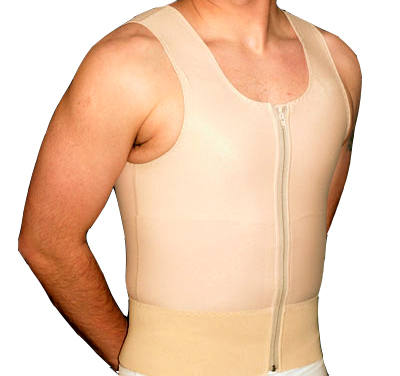Returning to Work
We understand that getting back to your daily routine is important, and you might be wondering when it’s safe to return to work. Here’s a simple guide:

Office or Desk Jobs: You can usually return to work the day after surgery. Before heading back to work, we recommend a quick follow-up visit to the clinic. The follow-up only takes about 20 minutes, ensuring your recovery is on track.

Physically Demanding Jobs: If your job involves physical labor, such as heavy lifting, operating machinery, or construction work, it's best to avoid strenuous activities for the first two weeks. This will help prevent any strain on the operated area and ensure a smooth recovery.

Exercise and Workouts: We encourage light physical activities to aid recovery. You can start leg workouts, light walking, or gentle jogging as early as a week after surgery. However, wait at least 4 weeks before resuming weightlifting or chest exercises. During the first month, avoid using your arms and chest too much to prevent complications.
Important Post-Op Care Tips

- Healthy Eating: Start with soft, gentle foods and avoid spicy or strong-tasting dishes. You can enjoy most foods, except for alcoholic beverages and overly salty meals.
- Avoid Smoking: Smoking can significantly delay the healing process and increase the risk of infection. This includes traditional cigarettes, e-cigarettes, hookah, and even exposure to secondhand smoke. Avoid smoking for at least 2 weeks post-surgery.
- Handling Fluid Leakage: It’s normal to experience a bit of fluid leakage during the first day. If this happens, replace the dressing with a sterile gauze. Make sure not to open the dressing point as the wound needs to stay protected from contamination.

- Compression Garment: Wearing your compression vest is crucial for your recovery. It prevents fluid accumulation, helps reduce swelling, and supports skin retraction. Wear it for 4 weeks—24 hours a day for the first 2 weeks, then 12 hours a day for the next 2 weeks.
- Showering and Bathing: You can take a shower 1 to 2 days after surgery with a waterproof band on the wound. For hot baths, saunas, or swimming, give your body 4 weeks to fully recover.
- Sponge Pad Care: If you were provided with a sponge pad, apply it around the areola for only 7 days. This helps with healing and provides gentle support.
What to Expect During Recovery
Your chest might appear asymmetrical, lumpy, swollen, or slightly dimpled. Don’t worry—this is a temporary phase that can last for 4 to 6 months. Light daily activities like walking can speed up recovery, but avoid lifting anything heavier than 40 pounds (about 18 kg) during the first week. It’s okay to roll luggage, but avoid lifting it.
- Massage and Stretching: After 2 weeks, start light massage and gentle stretching. The “Biobond (lumps)” under the skin may take 4 to 6 months to gradually decrease.
- Scarring: It’s normal to develop ‘Hypertrophic scars’ after chest surgery. Proper post-op care is essential to minimize their appearance.
When to Contact Us
our safety and comfort are our top priorities. Please reach out to us immediately if you experience any of the following symptoms within 3 to 4 days after surgery:
- Excessive pain
- High fever
- Yellowish discharge from the wound
- Persistent itching
We are here to support you every step of the way. If you have any questions or concerns, please do not hesitate to contact us. Your smooth and speedy recovery is our goal!
[Domande frequenti] Posso sottopormi contemporaneamente a un intervento chirurgico di ginecomastia e liposuzione addominale?
Alla Clinica Evita la sicurezza del paziente è al primo posto. Ecco perché non eseguiamo interventi di ginecomastia e liposuzione addominale nello stesso giorno. Scopri le ragioni mediche alla base del nostro approccio in due fasi e come porta a un recupero più sicuro e veloce con risultati migliori.
Malattia di Mondor: cosa c’è da sapere
La malattia di Mondor è una condizione rara ma innocua che può verificarsi dopo interventi chirurgici come la ginecomastia o la chirurgia superiore. Provoca una vena simile a un cordone sotto la pelle, spesso con lieve disagio. Anche se può sembrare preoccupante, questa condizione è temporanea e si risolve naturalmente nel tempo con semplici cure come massaggi e impacchi caldi. Scopri come identificare e gestire la malattia di Mondor per un recupero più agevole.
Adesione post-chirurgica dopo l’intervento di ginecomastia: cause, sintomi e soluzioni
Le aderenze post-chirurgiche dopo l'intervento chirurgico di ginecomastia possono causare fossette cutanee, movimenti limitati e persino cambiamenti nel colore della pelle a causa di una ridotta circolazione sanguigna. A differenza del BioBond, che si dissolve entro 2-4 mesi, le aderenze possono persistere per oltre sei mesi. Questo post esplora le loro cause, sintomi, strategie di prevenzione e opzioni di trattamento, con approfondimenti di esperti del Dr. Francis Jeon. Scopri come massaggi, esercizio fisico e interventi medici adeguati possono aiutare a gestire le aderenze in modo efficace.
Guida completa alla prevenzione e al trattamento delle cicatrici ipertrofiche dopo l’intervento chirurgico
Le cicatrici ipertrofiche sono una preoccupazione comune dopo l'intervento chirurgico, specialmente nelle aree ad alta tensione come il torace o l'ombelico. Questa guida completa spiega le cause, le strategie di prevenzione e i trattamenti efficaci, tra cui Steri-Strips, gel di silicone e chirurgia di revisione delle cicatrici, con cure specializzate della Clinica Evita.
Chirurgia della ginecomastia e sieroma: cause, gestione e recupero
I sieromi sono una parte naturale del processo di recupero per molti pazienti con ginecomastia. Con le cure adeguate, di solito si risolvono da soli. Alla Clinica Evita offriamo una guida competente e un'assistenza personalizzata per aiutarvi a riprendervi con fiducia. Se hai dubbi sulla tua guarigione, non esitare a contattare il nostro team.
Domande e risposte sulla ginecomastia
Alcune domande sulla ginecomastia
